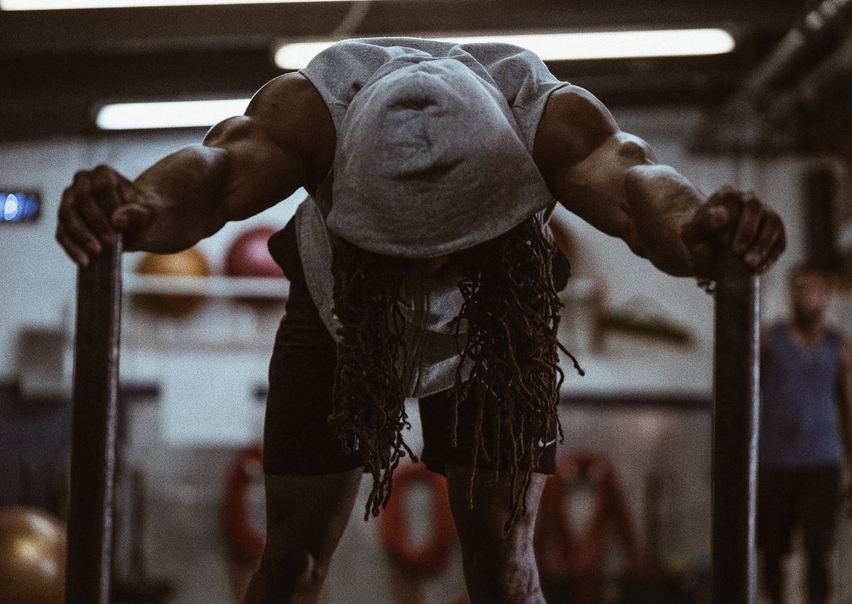What is a HIIT Workout?

The acronym HIIT refers to high intensity interval training and is a type of workout which is touted as one of the best for shredding pounds and maintaining optimal level of health. This article will define HIIT and its benefits, provide some workouts for beginners, suggest workouts that can be done at home, and offer advice to those who probably should not be engaged in HIIT training.
What is HIIT?
What exactly does high intensity interval training involve? These workouts are defined by short bursts of activity set apart by shorter periods of rest. The theory behind HIIT is that the maximum output can be achieved during these short bursts. The duration of the vast majority of HIIT workouts is less than 30 minutes, allowing an individual to get a fast, calorie-burning workout in a shorter period of time.

Benefits of HIIT
HIIT workouts offer participants a diversity of health benefits which is a major reason why it has become so popular among both trainers and participants. Take a look at several of these advantages:
- HIIT Workouts are Versatile. HIIT training can be adjusted to various levels of fitness and are often used for group fitness classes. They can be done just about anywhere and centered around almost any type of physical activity including: running, swimming, cycling, fitness and weight training.
- They Increase Metabolic Rate. By combining intensity with interval training, the metabolic rate of participants is given a boost for up to 48 hours after the workout is over. Thus calories are burned for a longer period of time.
- HIIT Workouts are Quick. The average HIIT workout routine can be accomplished between 15 to 30 minutes. Those who do not have a lot of time to dedicate to being at the gym are able to get in a workout alongside a hectic schedule.
- They Don’t No Equipment. Although it is possible to do HIIT exercises using weights and other equipment, it is not necessary. The majority of workouts utilize the body weight of the individual and focus on boosting the heart rate to optimum levels.
Since high intensity interval training is quick, versatile, and needs no equipment to obtain results, the number of people making use of it continues to grow. The best way to break into interval training is through HIIT workouts for beginners.

HIIT Workouts for Beginners
Because of the intensity factor of a HIIT workout, it is necessary to start with a shorter duration workout that is simple and easy to perform before building to more difficult and longer duration workouts. Here are several beginner workouts to consider:
10-Minute HIIT Beginner Workout
This quick HIIT workout routine is easy to perform and is just slightly longer than some people spend in the shower.
- Jab, cross, front: From a standing position place the right foot slightly in front of the left. Turn the hips toward the left side. Draw the hands up into a boxing position. Jab or punch straight ahead with the right fist, and then follow up with a cross punch the left, allowing the body to rotate forward, shifting the weight to the right foot and lifting the left heel from the floor. Step back with the right foot and rotate the hips to the right and repeat the punching sequence in the opposite direction. Continue this exercise for 30 seconds.
- Rest 10 seconds and position for the next exercise.
- Jumping jacks: Stand upright with the feet hip-width apart and the arms at the sides. In a single motion, jump and spread the feet while swinging the arms upward to clap together at the top, and then return to the starting position. Repeat this for 30 seconds as fast as possible.
- Rest 10 seconds and position for the next exercise.
- Sumo squats: Spread the feet a little bit beyond shoulder width with the toes pointed outward at a 45 degree angle. Keeping the weight on the heels, the back flat, and the chest pushed upward and slightly forward, lower the rear toward the floor. Once the thighs are parallel, engage the glutes and quads to push pack to a standing position. Repeat this for 30 seconds.
- Rest 10 seconds and position to start the three-exercise cycle over again beginning with the jab/cross
- Repeat the cycle for 10 minutes, which is 5 times through the cycle.
- Cool down using an overhead stretch, reverse lunge and forward fold.

15-Minute Beginner HIIT Workout
The 15 minute beginner HIIT workout is designed to amp things up a little bit more for those who are new to high intensity interval training, but are in a little bit better condition. Here are the steps to this workout:
- Push-ups: Whether they are done resting on toes or resting on the knees is not important in the beginning. The goal is to lower and raise the body as many times as possible in 45 seconds.
- Rest 15 seconds and position for the next exercise.
- Squats: A chair can be utilized for support for those individuals who need a little bit of extra balance. Keep the feet directly below the hips while lowering the rear toward the floor until the thighs are parallel to the floor, and then press upward to the standing position. Repeat as many times as possible for 45 seconds.
- Rest 15 seconds and position for the next exercise.
- Butt kicks: Jog or walk in place. While walking or jogging, kick your heels all of the way up until they touch the rear. Continue the action as many times as possible for 45 seconds.
- Rest 15 seconds and position for the next exercise.
- Tricep dips: Place the hands on a stable chair or a low table with the back toward the chair. Place the legs straight ahead until the weight is balance on the palms. Lower the hips toward the floor until the upper arm is parallel to the floor, and then press upward to the original position. Repeat as many times as possible for 45 seconds.
- Rest 15 seconds and position to repeat the four-exercise cycle.
- Repeat the cycle for 15 minutes, which is 4 times through the cycle.
- Cool down using an overhead stretch, a quad stretch and a forward fold.

20 Minute or 30 Minute Variation
- To increase the above workout to 20 or 30 minutes, add in a side lunge making it a five-exercise cycle. Repeat the cycle 4 times for 20 minutes and 6 times for 30 minutes.
- Side Lunge: Start with the feet shoulder width and the hands on the hips. Step with the right foot toward the right side with the toe turned slightly outward. Lower the body until all of the weight is off of the left foot and then push back to the original position. Repeat the same motion to the left side. Alternate back and forth, doing as many repetitions as possible for 45 seconds.
- Rest 15 seconds and prepare for the next exercise in the cycle.
- Cool down using an overhead stretch, a quad stretch and a forward fold.

HIIT Workouts at Home
One of the great advantages of HIIT is that getting a workout does not require a gym membership, equipment or any special place to do the workout. Most HIIT exercises can be performed anywhere with enough space to move freely, such as the park, a hotel room, or even at home in the garage or the living room. Here are some more advanced workouts that can be done at home.
12 Minute Anywhere HIIT Workout
Everybody has 12 minutes to spare at some point during the day. All that is necessary is a little space and a can-do attitude to complete HIIT workouts at home. Here are the steps to a really quick workout:
- Jumping jacks: Stand upright with the feet hip-width apart and the arms at the sides. In a single motion, jump and spread the feet while swinging the arms upward to clap together at the top, and then return to the starting position. Repeat this for 20 seconds as fast as possible.
- Rest 10 seconds and position for the next exercise.
- Sumo squats: Spread the feet a little bit beyond shoulder width with the toes pointed outward at a 45 degree angle. Keeping the weight on the heels, the back flat, and the chest pushed upward and slightly forward, lower the rear toward the floor. Once the thighs are parallel, engage the glutes and quads to push pack to a standing position. Repeat this for 20 seconds.
- Rest 10 seconds and position to start the next exercise.
- Push-ups: Whether they are done resting on toes or resting on the knees is not important in the beginning. The goal is to lower and raise the body as many times as possible in 20 seconds.
- Rest 10 seconds and position for the next exercise.
- Butt kicks: Jog or walk in place. While walking or jogging, kick your heels all of the way up until they touch the rear. Continue the action as many times as possible for 20 seconds.
- Rest 10 seconds and position for the next exercise.
- Tricep dips: Place the hands on a stable chair or a low table with the back toward the chair. Place the legs straight ahead until the weight is balance on the palms. Lower the hips toward the floor until the upper arm is parallel to the floor, and then press upward to the original position. Repeat as many times as possible for 20 seconds.
- Rest 10 seconds and position for the next exercise in the cycle.
- Side Lunge: Start with the feet shoulder width and the hands on the hips. Step with the right foot toward the right side with the toe turned slightly outward. Lower the body until all of the weight is off of the left foot and then push back to the original position. Repeat the same motion to the left side. Alternate back and forth, doing as many repetitions as possible for 20 seconds.
- Rest 10 seconds and position for the first exercise of the six-exercise cycle.
- Continue through the cycle of six exercises for 12 minutes, which is 4 times through the complete cycle.
- Cool down using an overhead stretch, a quad stretch and a forward fold.
At Home Beat the Clock HIIT Workout
This workout is a little bit different and for someone with more advanced fitness experience. Rather than a traditional, timed HIIT workout, the objective of this workout is to do the exercises more and more rapidly in order to beat the previous workout time. Here are the steps to this workout:
- Begin at a specific time on the clock or use a stopwatch to keep track of how long it takes for each exercise and/or to complete the entire cycle of exercises.
- 50 Sit-Ups: Position the body lying on the floor with the back and shoulders flat on the floor, the hands laced behind the head, the knees bent, and the soles of the feet flat on the floor. Maintain the position of the rear and feet while engaging the abdominal muscles to roll up until the back is perpendicular to the floor. Return to the starting position. Repeat the exercise 50 times.
- Rest 30 seconds and position for the next exercise.
- 40 Jump Squats: Position the body standing with the arms at the sides or hands on the hips and the feet at shoulder width. Bend the knees and sit back into a quarter squat. Jump upward until the feet have left the floor. Land in the starting position and repeat the exercise 40 times.
- Rest 30 seconds and position for the next exercise.
- 30 Push-Ups: Position the body in the plank position with the hands directly under the shoulders and the feet positioned at hip width. Keeping the elbows against the sides, lower the chest until it nearly touches the ground, and then press upward to the starting position. Repeat the exercise 30 times.
- Rest 30 seconds and position for the next exercise.
- 20 Split Jumps (Jumping Lunges): Position the body standing with the feet at hip width and the arms at the sides or the hands on hips. Jump upward, landing with the right foot well ahead and the left behind. Bend the right leg over the right foot. Lunge upward into a jump and switch the legs so that the left leg is in front and the right leg is behind. Repeat this exercise 20 times.
- Rest 30 seconds and position for the next exercise.
- 10 Tricep dips: Place the hands on a stable chair or a low table with the back toward the chair. Place the legs straight ahead until the weight is balance on the palms. Lower the hips toward the floor until the upper arm is parallel to the floor, and then press upward to the original position. Repeat this exercise 10 times.
- Record or remember the time to finish the cycle or the time to perform each exercise.
- Repeat the cycle again after full recovery and attempt to beat the previous time or times or wait until your next workout session.

Who Should Avoid HIIT?
Because of the intensity factor in HIIT, there are some individuals who should not perform this sort of workout. The following reasons are those which are most common contraindications for high-intensity interval training:
- HIIT is Unpleasant and Uncomfortable. If an individual does not like the pace and the discomfort of a high intensity workout, then there is really no reason to do HIIT. Look for a fitness alternative that suits individual needs and preferences.
- Increased Risk of Injury is possible with HIIT. Individuals who are prone to injury and/or are recovering from injuries or physical trauma should probably avoid HIIT.
- Targeted Results are not typically a HIIT characteristic. This type of workout is designed for boosting metabolic rate and overall fitness rather than targeted toward toning any specific areas.
- Individuals suffering from Adrenal Fatigue should stay away from HIIT. Because one of the causes of adrenal fatigue is too much, high-intensity exercise combined with other stressors and conditions, HIIT could worsen the condition.
- Those on Low Carb Diets should stay away from HIIT. The high-intensity of a HIIT workout tends to burn off carbs very rapidly causing an extreme dip in blood sugar, such a dip leads to a spike in cortisol, which leads to poor sleep and stimulates fat storage enzymes.
Keep in mind that HIIT is best utilized in moderation, which means that getting necessary rest between workouts is essential. Those who are unsure of whether or not HIIT is right for them should consult with a healthcare professional before engaging in this sort of exercise.
